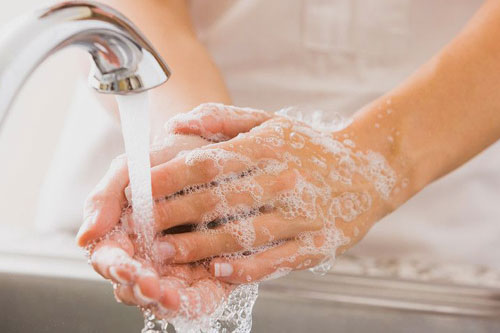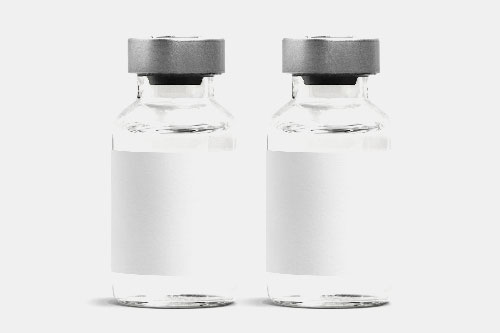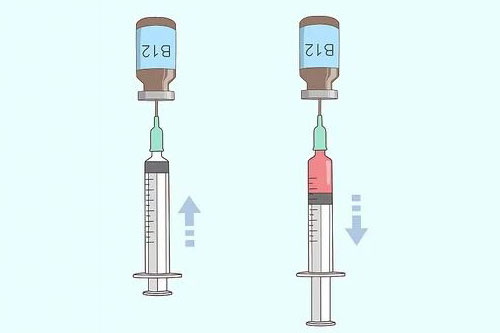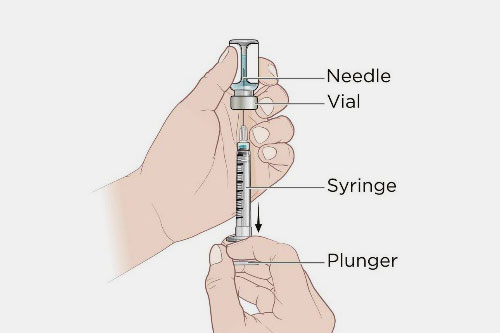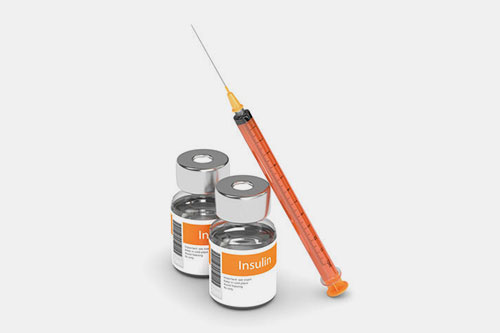How To Use An Insulin Vial ?
Have you ever looked into the small bottle called a vial and thought, “How such a small vial holds a liquid substance that saves a million people with diabetes?” The small bottle not just holds a liquid known as insulin, but it also requires a proper handling and putting it into the syringe. Due to proper handling, it ensures its effectiveness and safety.
AIPAK engineering highlights the simple, safe, and accurate dosage use of insulin and breaks it down on how to use it, how to avoid some common mistakes, and how to handle it smoothly i.e. how to put it in the syringe ,how to avoid air bubbles and ensure the correct injection site.
If you are curious about how to use it and why it is important for diabetes management, this article is worth reading!
1.What exactly is an insulin vial?
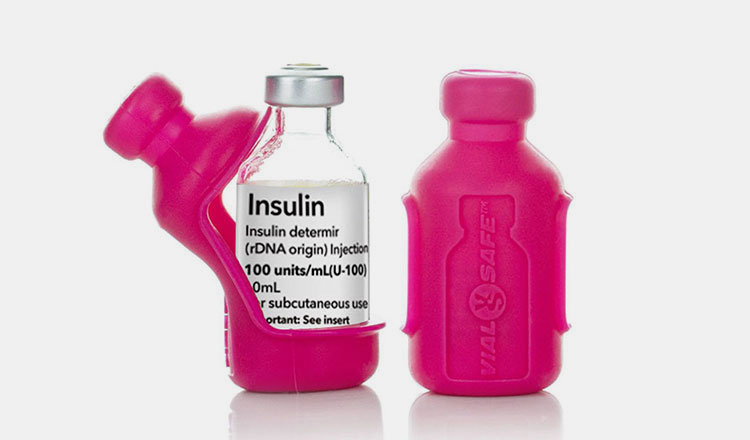
Insulin vial-Picture courtesy: etsy.com
An insulin vial is a small and delicate bottle that holds a liquid. The clear liquid is a hormone called insulin that is used to treat diabetes. As the diabetic patient has high blood sugar level so the measured amount of insulin is injected from the insulin vial into diabetic patients to control the blood sugar level.
The holding capacity of insulin in each vial is typically 10 mL. The insulin from the vial is injected into the patient's body by using a syringe.
Various types of vials are present in the market based on how long and how fast they act.
2.How is an insulin vial different from an insulin pen?
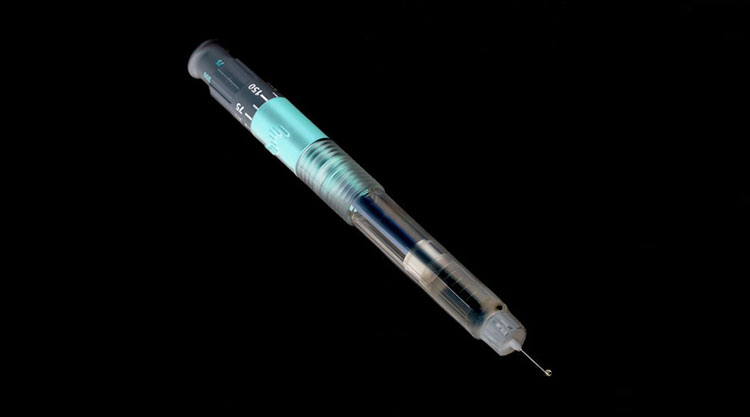
Insulin pen
You must came across an insulin vial and an insulin pen. Insulin vial and an insulin pen both hold a liquid hormone called insulin. Both are used for treating the diabetic patient, but they look and work a bit differently. Here is a detailed comparison:
| Points | Insulin vial | Insulin pen |
| Structure | An insulin vial is a small bottle filled with liquid called insulin. | An insulin pen looks like a thick marker or pen, filled with a fluid called insulin. |
| Insertion into the body procedure | First, you need to select the area (abdomen, thigh, or upper arm), then clean the area with an alcohol swab. You need a separate syringe to draw the insulin out and then inject it. | You need to select the area (abdomen, thigh, or upper arm). Clean the area with cotton dipped in an alcohol. Then dial the desired unit and push the button to release any air. Insert it into the skin by keeping the pen at 90° to the skin and inject. |
| Effort and practice | The usage of an insulin vial requires a bit more effort and practice to inject it into the body. | It is more convenient and easier to handle as it is an all-in-one device. You just need to dial your dose and inject it into the body. |
| Insulin capacity | A standard insulin vial holds 10 mL of insulin. | A standard insulin pen holds 3 mL of insulin. |
3.How to use an insulin vial?
Using an insulin vial is a bit technical and requires effort. But with practice, it is a routine and you will not need to ask your doctor, nurse, or pharmacist. Here are some of the steps you have to follow!
Wash and sterilize your hands:
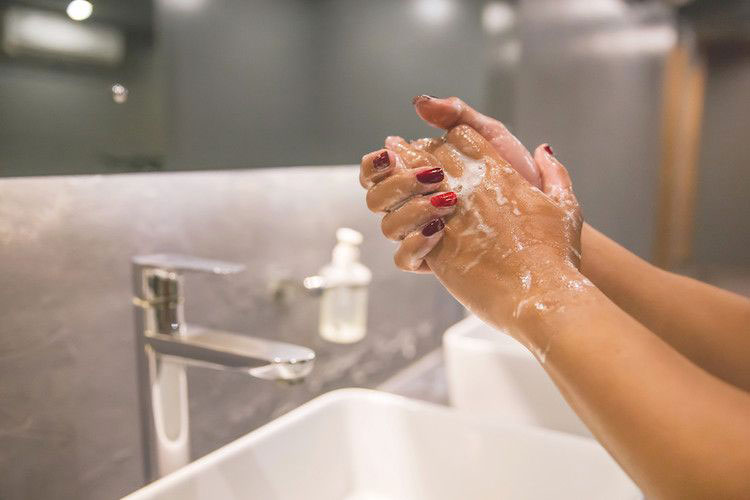
Wash your hands- Picture courtesy: apple.news
In the first step, you must be conscious about your hands. For this purpose, you have to wash your hands with soap and water to avoid infection. Then sanitize your hands by applying sanitizer.
Gather your supplies:
You will gather your essential items like:
- An insulin vial
- A clean syringe
- An alcohol swab
- A container to throw away the used syringe
Check the insulin:
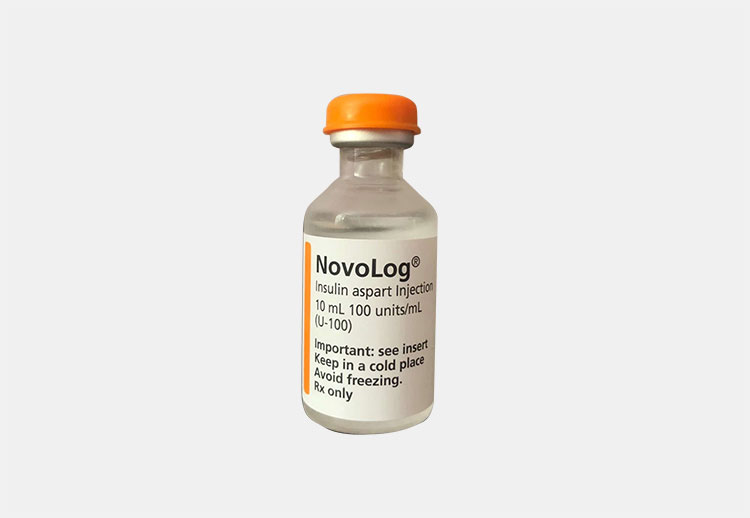
Check the insulin- Picture courtesy: connectedinmotion
Then, you must check the insulin. You must make sure that the vial has the right type of insulin and, it is sealed. Is it not expired, and does the insulin look normal (clear or cloudy, depending on the type)?
Roll ( cloudy) insulin:

Roll the insulin vial
If the insulin vial is cloudy, roll it between your hands. Don’t shake the vial. By shaking, you will get air bubbles.
Clean the vial top:
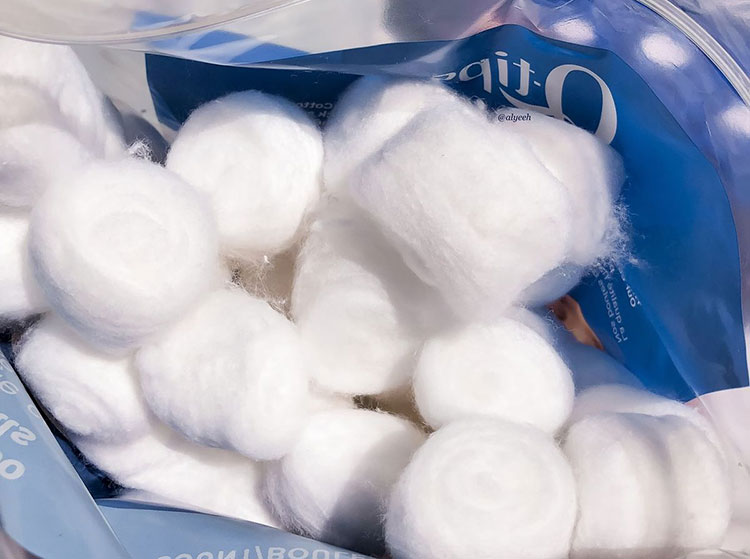
Cotton swab
Then, the top of the vial should be cleaned with an alcohol swab to get rid of any kind of external contamination. Then you can insert the syringe needle into the cleaned spot.
Draw air into the syringe:
You need to pull the syringe plunger back to withdraw the air, and that is equal to the amount of insulin you will need.
Inject air into the vial.
After that, for pushing the air into the vial for pressure balancing, you need to stick the needle into the rubber top of the vial. This will make it easier for you to draw the right amount of insulin.
Draw insulin into the syringe:
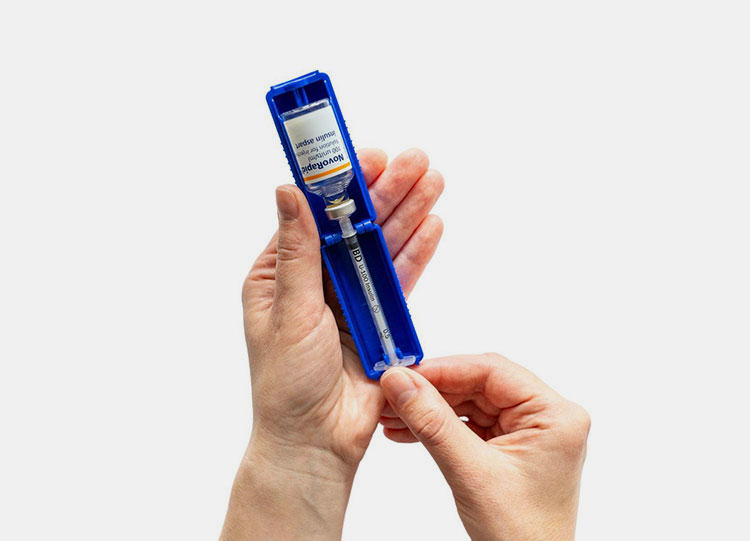
Drawing insulin into the syringe- Picture courtesy: etsy.com
Turn the vial so that the position of the vial is on top and the syringe is upside down. Slowly pull the plunger back and withdraw the right amount of insulin.
Remove the air bubble:
Once the insulin gets into your syringe, then you need to remove the air bubble by tapping the top of the syringe gently, for proper quantity of insulin. Then push the plunger slightly to remove the air bubble.
Inject your insulin:
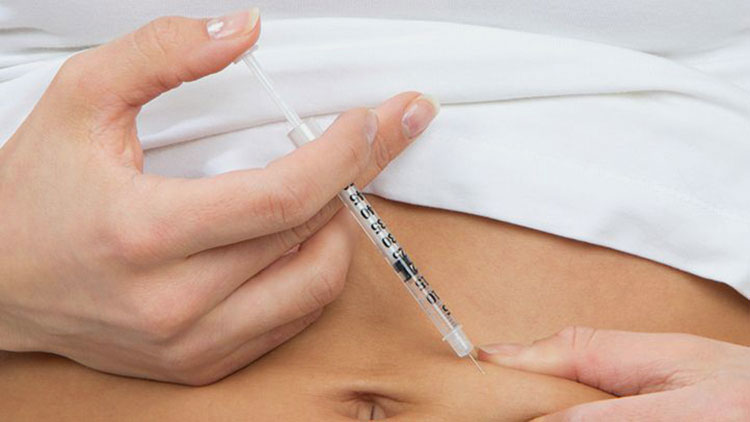
Injecting the insulin- Picture courtesy: everydayhealth.com
Before injecting the insulin, you need to choose the injection site, the possible sites are the abdomen, thigh, or upper arm, and gently clean it with an alcohol swab for removal for any germs. Insert the needle and push the plunger slowly. When an insulin injection into the body is complete, remove the needle.
Dispose of the syringe safely:
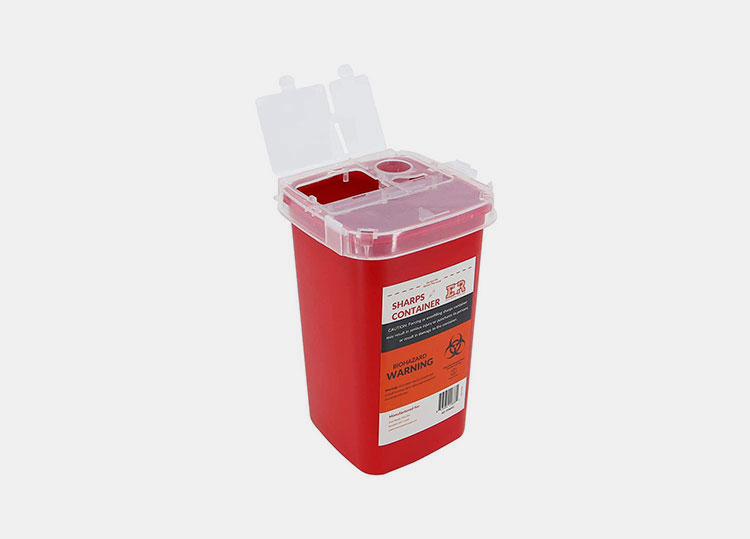
Dispose of the syringe
When the process is completed, the used syringe and empty vial should be dispose of in the sharps container. Always look for the eco-friendly disposing of procedure.
4.What are the types of insulin vial?
There are many insulin vials in the market. You must be thinking why they are divided into different types. They are divided according to how quickly they start working and how long they last in your body.
Let’s talk about these different types:
Rapid acting insulin:

Insulin Lispro injection- Picture courtesy: usmed.com
The vial is labelled with an insulin name and also its concentration. The concentration is usually U-100 that means 100 units per milliliter.
The time taken by this insulin to starts working in your body is within 10 to 30 minutes after injection, and the peak hour of its action is about 1 hour. It can balance your sugar level in your for about 3 to 5 hours.
You must be careful about taking the dosage. Use it before or after the meal. The insulin will control blood sugar spikes.
Examples of rapid acting insulin are insulin aspart and insulin lispro.
Short acting insulin ( regular insulin)

Humulin R insulin vial- Picture courtes : Heartland Veterinary Supply & Pharmacy
The insulin vial is labelled with its name and also its concentration. The concentration is usually U-100 that means 100 units per milliliter.
It usually start working after the injection, in your body within 30 to 60 minutes and the peak hour of its action is about 2 to 4 hours. It lasts in your body for about 5 to 8 hours.
You must be careful about taking the dosage. Use it before the meals. The insulin will control blood sugar spike.
Examples of short acting insulin are Humulin R and Novolin R.
Intermediate acting insulin:

Humulin N insulin vial- Picture courtesy: McGuff
You will see the vial with labelled its name and concentration. It usually start an action in your body within 1 to 2 hours and the peak hour at which its action is highest is about 4 to 12 hours. It lasts (keeping the sugar level at normal) in your body for about 12 to 18 hours.
It is often used for background (basal) control. You can also combined it with short acting insulin.
Example of intermediate acting insulin is NPH insulin ( Humulin N, Novolin N)
Long acting insulin:

Semglee insulin vial
Long acting insulin vial is labelled with its name and concentration. It usually start working in your body within 1 to 2 hours. It lasts in your body for about 24 hour or sometimes longer. It provides steady insulin to your body all day.
Examples of long acting insulin are levemir and semglee.
5.What common mistakes do people make when using an insulin vial?
People do some common mistakes while using an insulin vial. The common mistakes are given as follows:
| Mistakes | Explanation |
| Not clean/ wash the hands:
|
Washing hands is compulsory for injecting insulin into the body. If you will not wash and sanitize your hands, then there are high chances of contamination and you/ the patient may suffer from other complicated diseases as well. |
| Not clean the vial rubber:
Picture courtesy: rawpixel.com |
As the rubber top of the insulin vial is exposed to environment, then germs chances on the rubber top is higher. Some people insert the syringe needle into the vial without realizing to clean it, the germs sticking on the needle has high chances and it can create complication in your body. |
| No investigating the vial: | Before using the insulin vial, some people do not check the expiry date, which is very important before taking anything to your body. They also do not care and have no an idea what’s the best storage place for an insulin. Moreover, if you find the clear liquid in the vial, go for it but if you find the discolored or crystal clumps in the insulin vial then do not use it. |
| Shaking the vial: | For using the insulin vial, you must roll it in your hands .Some people shake the insulin vial, which is not the correct way of using the insulin vial. The reason behind this is forming the air bubbles in the vial. |
| Forgetting to inject air into the vial:
Picture courtesy: wikihow.com |
Some people forget to inject the air into the vial that ends up on an unbalanced insulin dose. For drawing the accurate amount of insulin from the vial, it is important to inject the air in to the vial and create a vacuum. By this, you can get precise amount of insulin. |
| Not removing the air bubble: | Some people slip their mind to remove the air bubble from the syringe after filling the syringe with insulin. You must be remember to remove the air bubble from the syringe by tapping it. If there are still air bubbles then it can cause an insertion of air bubble into the body and cause irritation. |
| Drawing up the plunger too quickly
Picture courtesy: healthline.com |
While using the syringe, to insert the insulin into the body, some people pull back the plunger too fast. Always remember, not to pull it too fast, pull it slowly. Otherwise, this will ends up in air bubbles formation or make the insulin foam up. |
| Reusing the syringe
|
Some people reuse the syringe, which can increase the risk of infection. Directly throw it in sharps container. |
| Storing an insulin vial incorrectly | Some people store the insulin vial in a hot place or the freezer. This is not the correct way of storing an insulin vial. You have to store the insulin vial in a cool place. |
| Not changing the injection spot | Some people every time inject a syringe in the same spot , which can lead to a lump in that spot. By forming a lump, the absorption of insulin can also affect. |
6.How do you store insulin vials to keep them effective and safe?
Insulin is a sensitive medicine. To keep it effective and safe, you must have to give it a proper temperature. If exposed to the wrong temperature, then it may lead to improper function. Here are some of the tips for storing the insulin vial:
Unopened( completely sealed ) insulin vial:

Unopened vials-Picture courtesy: deckmydiabetes.com
If you have never opened your insulin vial or your insulin vials are completely sealed, then you must have to store them in a cool place. You must keep in mind to not store it in a freezer or a hot place. Keep the unopened vials in a refrigerator in the main part of the fridge.
Don’t make mistake to store it in the fridge door. By keeping the sealed insulin vials in the freezer unintentionally or mistakenly then it will leads to freeze. Even if it seems to be fine but you should have thrown them right away because the temperature for insulin storage was not optimum and now it has lost its effectiveness.
The ideal temperature is between 2 °C - 8 °C, or in Fahrenheit scale, 36°F - 46°F for store the sealed insulin vials.
Opened (in-use) insulin vials:
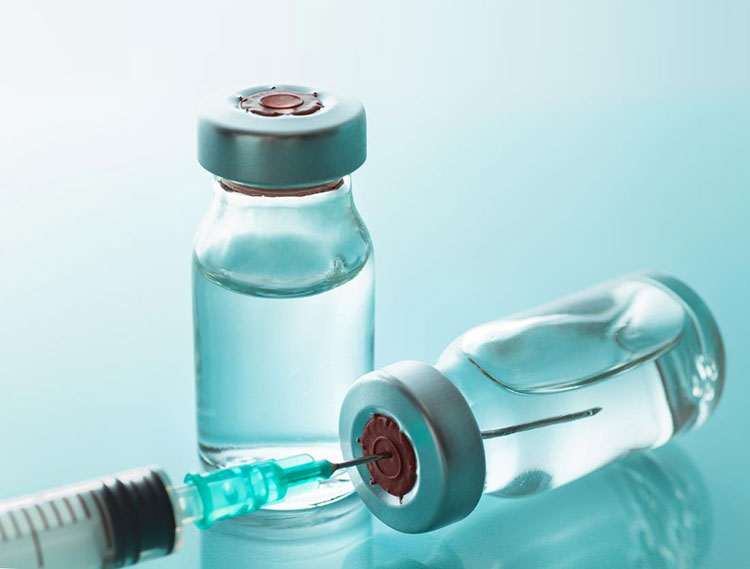
Opened vial-Picture courtesy: medicalnewstoday.com
Once opened, the opened insulin vials should be kept at room temperature. If someone keep the vial again in the fridge, it will lose its potency. You must make sure to keep the opened vial in a dry and cold place. You can ensure its safety and effectiveness by storage of the in-use insulin vial in such a style.
You may be confused about the usage of opened vial. Well, let me tell you that yes, you can use opened vials for 28 to 30 days, after that you must discard it.
You may be in trouble to exactly know the date, on which you have opened the vial. To remember the date, it is suggested to always write the date you opened the vial; this will help you track the days. After that, you must discard the left insulin in the vial, even if it looks fine.
The temperature, at which you can store the opened insulin vial is usually up to 25 °C or 77°F.
When travelling with insulin:
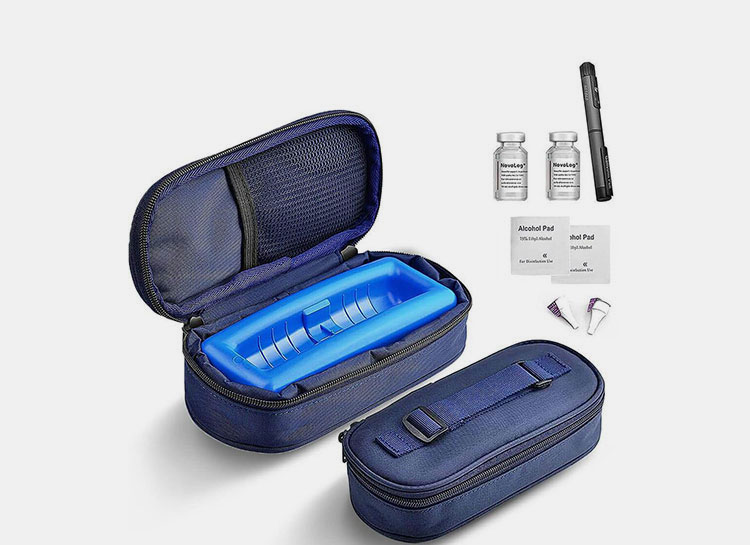
Insulin bag- Picture courtesy: re-store.net
If you are travelling and you need to store an insulin vial. You must be confused about the vial temperature, as it need cold temperature. For this purpose, you must keep it away from direct sunlight. Store them in a protective case or insulated bag for its safety and protection.
As the high temperature or freezing temperature is bad for storing the insulin vial so, do not leave it in a hot car or directly keep on the ice packs.
If you are going to be out for a while, use a cooling pouch or travel case for storing insulin vials, this will keep your insulin vial safe and effective.
7.How do you know if your insulin vial has gone bad or expired?
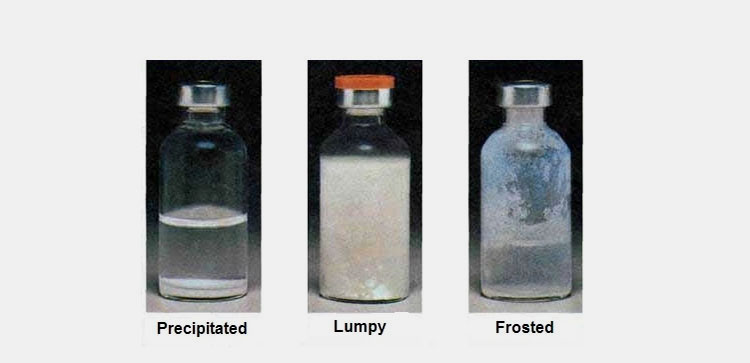
Expired insulin-Picture courtesy: vaya health
If your insulin vial has gone bad or expired, then it can lose its effectiveness and patient may suffer consequences. And affect your blood sugar control. Here is how you can tell if your insulin vial has gone bad or expired:
Check the expiration date:
For the safety and effectiveness of insulin, you must keep an eyes on the expiry date which is mentioned on the vial or box. Make sure to not use it if your insulin vial is past this date, because it has reduced effectiveness, it will not activate the hormones and so, your blood sugar level will remain high. If used, then it may lead to elevated blood glucose levels and many more complications.
Inspect the insulin appearance:
Different types of insulin have different appearances depending on the insulin type. Here are some general rules;
For clear insulin (for regular insulin), it should be completely clear. If it has clumps, is cloudy, or discolored, then discard it.
For cloudy (NPH) insulin, the appearance after rolling is milky. If you find crystals or clumps, then it has gone bad and throw it right away.
Consider storage conditions:
If you store an insulin vial in a very hot or in freezing temperature, then it will go bad and may lose its strength.
Your blood sugar is acting strange:
An insulin vial is used to lower the blood sugar level of the patient. If your blood glucose level is high despite taking insulin, then it is a sign that your insulin has gone wrong and not working properly.
8.What happens if you use expired insulin accidentally?
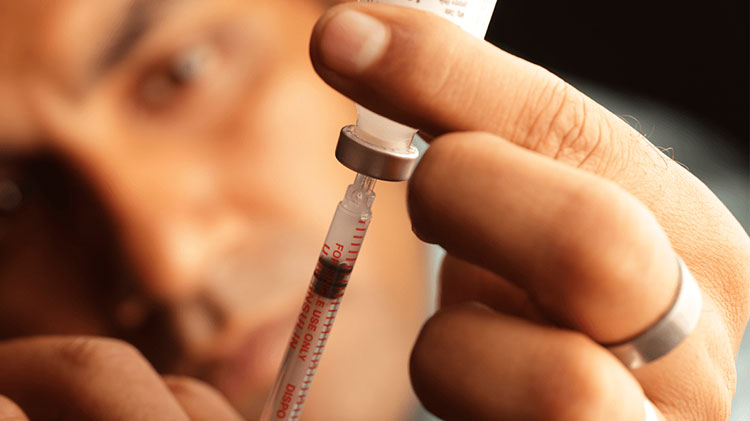
Injection of insulin into the syringe- Picture courtesy: healthline
If you used an expired insulin accidently, don’t panic. If once used an expired insulin then you not need to worry but make sure to not make your habit. When taken an expired insulin, you must pay attention to how your body act. Here are few points to be noticed:
The expired insulin has no strength for its effectiveness so, after using it your sugar level remains higher and do not come to normal.
You might feel thirstier, more need to urinate and more tired. These are the common symptoms of high glucose level.
At the moment, it is not usually dangerous but as the effectiveness of insulin has lost so, your body sugar level remains high, which can leads to some serious issues.
If you realize that you have used an expired insulin, keep checking your blood sugar level. If it is not coming down and remains higher than usual then you can switch to a fresh vial. At this moment, you may also need to consult the doctor.
9.Can an insulin vial be reused?
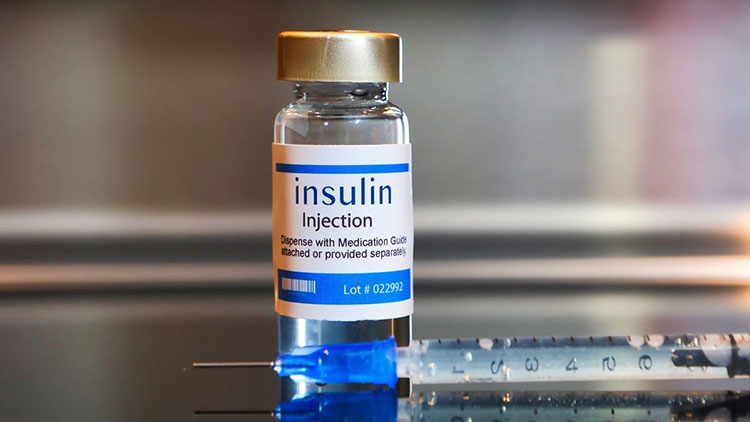
Insulin vial- Picture courtesy: usatoday.com
Some people wonder whether an insulin vial can be used or not. Yes, you can use them, but under specific storage conditions, within a specific time, and one vial used for the same person. The important aspects to consider are:
Reuse if:
You can reuse the vial if it is for the same person. Do not share the used vial with other diabetic patients. Until opened, you can use sealed vials that are stored in the refrigerator. When you opened the insulin vial and there is still insulin in the vial then you can store it at room temperature. The maximum limit for storing it is up to 28 days. You can use it within this time period; if it exceeds, then discard it.
Do not reuse it if :
If the insulin vial turned out to be cloudy or if crystals appeared, then do not use it. If the insulin vial is exposed to high temperature, then it can also turn bad, so don’t use it. Moreover, you should always check the rubber stopper of the insulin vial. Pharmaceutical industry always sealed it in order to ensure the customer's safety. So if you find it unsealed, then never use it. Just throw them away or do not buy from a pharmacy.
10.What happens if you inject an air bubble with insulin?

Air bubbles in injection-Picture courtesy: healthline.com
While using the insulin vial, you must be noticed and concentrate on the process of tapping the syringe before giving a shot. Have you ever thought what the purpose of tapping is? Or why is it compulsory to remove the air bubbles from the insulin dose?
You might be thinking it is a small detail, but actually, it matters a lot to remove the air bubbles. Let’s clear the query:
If there is an air bubble in the syringe, it occupies the space that should be filled with insulin. Due to this, you will not get the actual amount of insulin. As a result, the effectiveness of insulin is reduced in your body.
Do you know why insulin is injected into your body? The purpose of insulin is to act on your liver and control your blood sugar level. If you find the air bubbles in the syringe, the syringe will have less insulin quantity, and your body's blood glucose control receptors will be less activated, and hence, less blood sugar control will occur
If there are air bubbles in the syringe, then with injecting the insulin, you will also inject air bubbles into your body. By injecting air bubbles, you will feel uncomfortable. You may also have a chance of a clump occurring at that spot.
If you remove the air bubbles then it can help to keep every dose safe, effective, and consistent.
11.Are there specific safety tips to follow while handling an insulin vial?
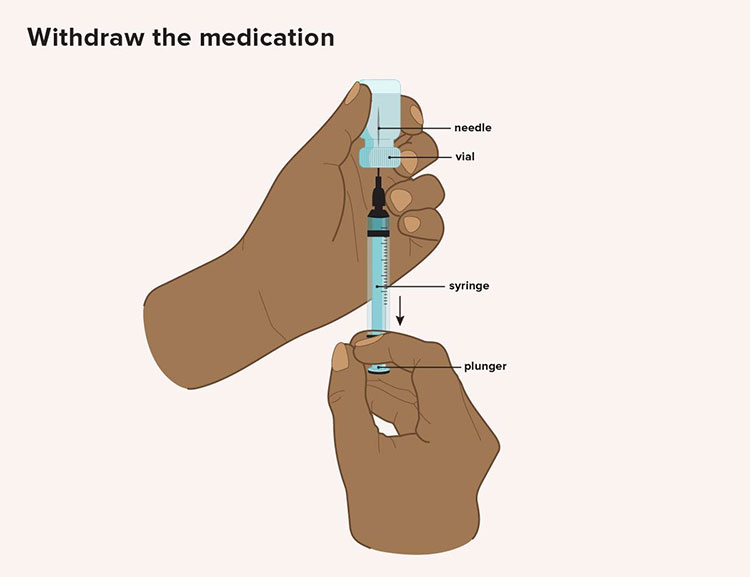
Using an insulin vial-Picture courtesy: healthline.com
You must be thinking it is very simple to handle an insulin vial, just by drawing the insulin and injecting it into your body. But your small mistakes can affect how well your insulin works. Let’s break down some of the main points that you must follow to keep things safe and effective.
| Tips | Explanation |
| Store it correctly | Unopened vials are stored in the refrigerator. Once opened, store it at room temperature. Do not let your insulin vials be in at very hot place or at freezing temperature.
You must always put a glance at the label for specific storage instruction. |
| Inspection of the vial before use | Always check the expiry date mentioned on the vial. Do not use if you find crystals or clump or discoloration. Always use clear insulin. |
| Cleaning of the vial | Clean the vial rubber stopper with alcohol swab before inserting the needle. Otherwise, it will contaminate the fluid. |
| Drawing of the insulin carefully | You must hold the syringe and vial vertically. Remove the air bubble by taping it. You must carefully inject air into the vial equal to the insulin quantity you want to withdraw. By this, you will balance the pressure and make it easy to draw the insulin from the vial. |
| Use sterile equipment | Never use a shared syringe, even with your close relatives. Always use a sterile and packed syringe. |
| Labelling of opened vials | Once open the insulin vial, always write the date on the vial. After 28 days, if there is insulin, throw it away. |
| Handling with clean hands | Always clean your hands before handling the procedure. This will prevent infection. |
| Disposing of used syringes and vials properly | Always throw the used syringes and empty vials in the designated sharps container. Do not throw it everywhere. |
12.How should you dispose of used syringes and empty insulin vials properly?
Have you ever thought is it okay to dispose of the used syringes and empty vials with regular trash? Or if there is a specific container to dispose of? Their proper disposing is crucial for public health. Here is what you need to know:
Safety disposal of used syringes:
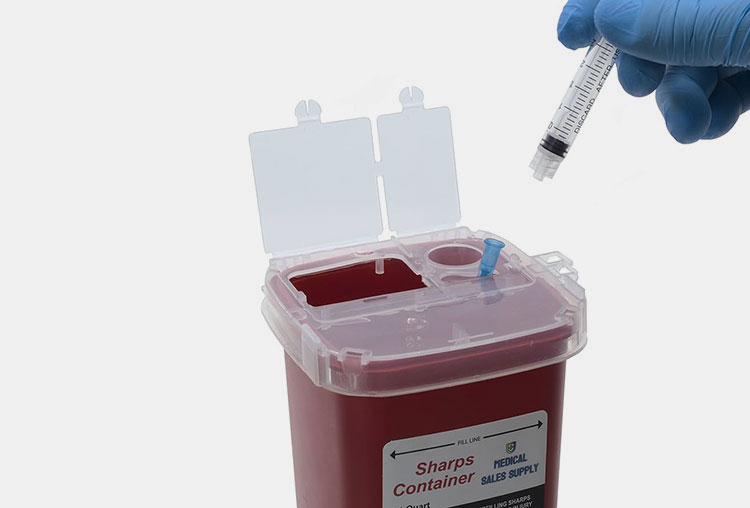
Safety disposal of used syringes
FDA- approved sharps containers are the best way to dispose of the used syringes. Always label the containers like “sharp- do not recycle”. You must be wondering if it is safe for us to fill the container. No, do not overfill it. Leave some space in the container so no syringe will come out of the container, and then seal it.
Safety disposal of empty vials:
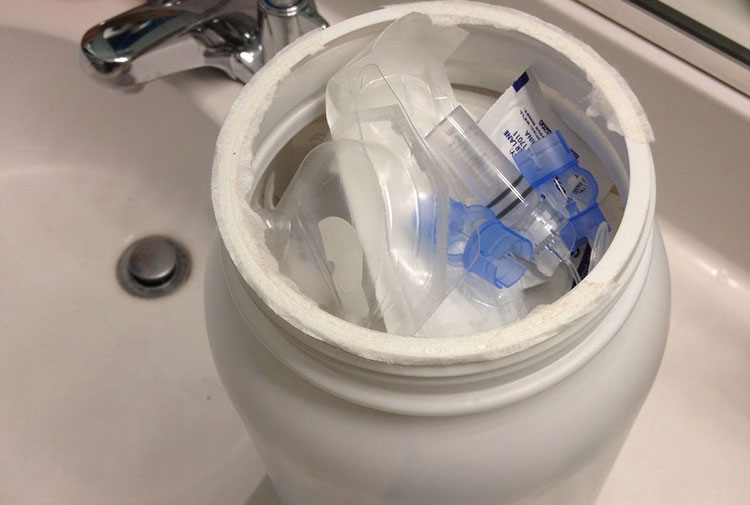
Safety disposal of empty vials
When your insulin vial becomes empty, do not throw it here and there. But for disposing of them, some require throwing them in regular household waste, while others require special disposal.
Make sure to throw the empty vials in a container, cap the vial, and then throw it. Always follow the eco-friendly disposables.
Conclusion:
After reading the blog on how to use an insulin vial, you will be confident about how to use it, how to dispose of the used syringes and empty vials. Always look for eco-friendly dispose of method. You can also able to know the types of insulin vials and how to correctly store these insulin vials, this will ensure its safety and effectiveness. In this blog, the safety tips for using insulin vials are also given. Hope you like our article. If you still have query about insulin vial, don’t hesitate to reach out AIPAK ENGINEERING.
Don't forget to share this post!
CONTACT US
Tell us your raw material and project budget to get quotations within 24 hours.
WhatsApp Us: +86 181 7101 8586
 Tell us your material or budget, we'll reply you ASAP within 24 hours
Tell us your material or budget, we'll reply you ASAP within 24 hours

